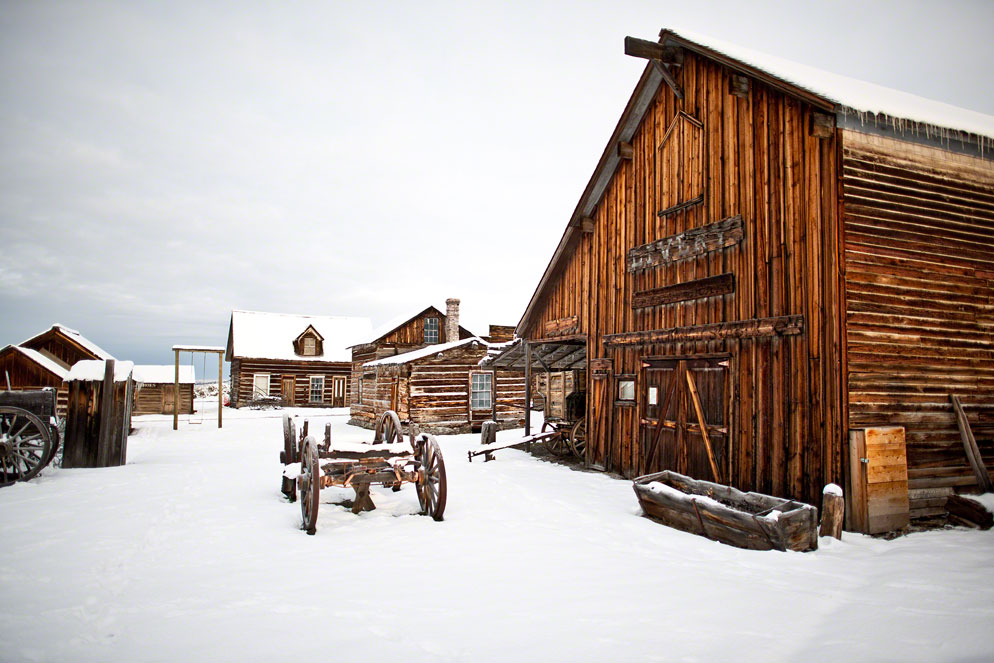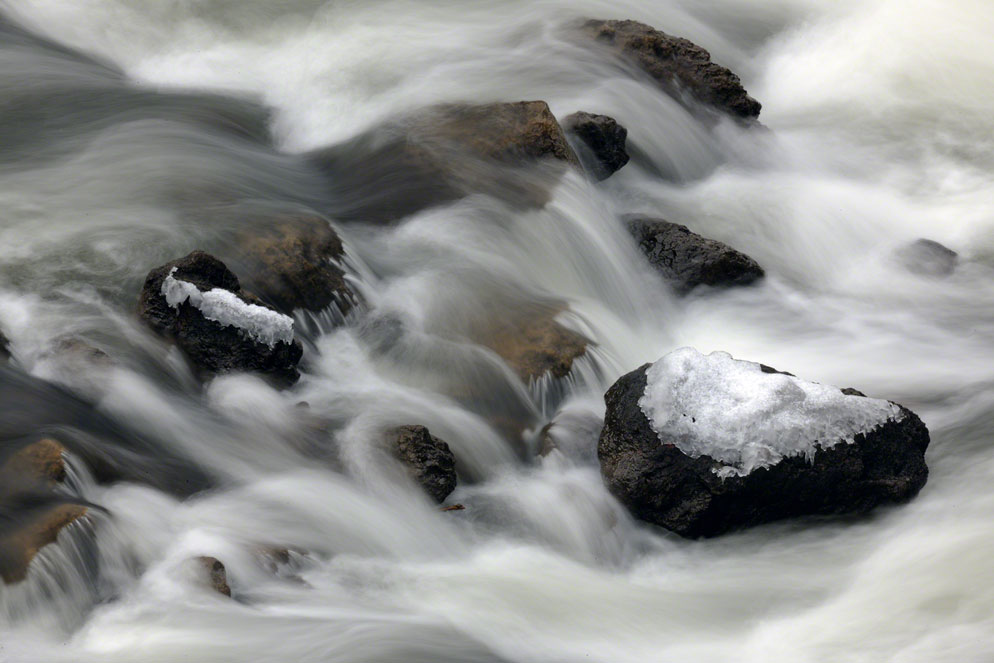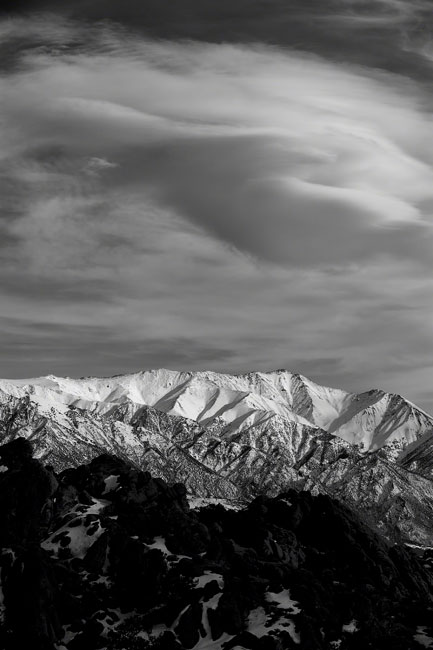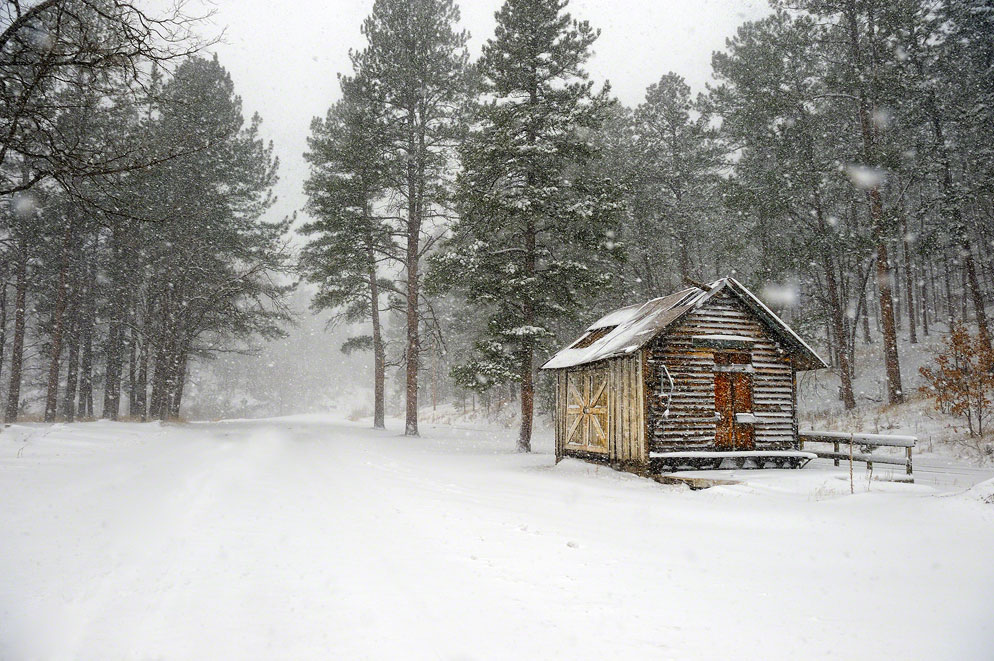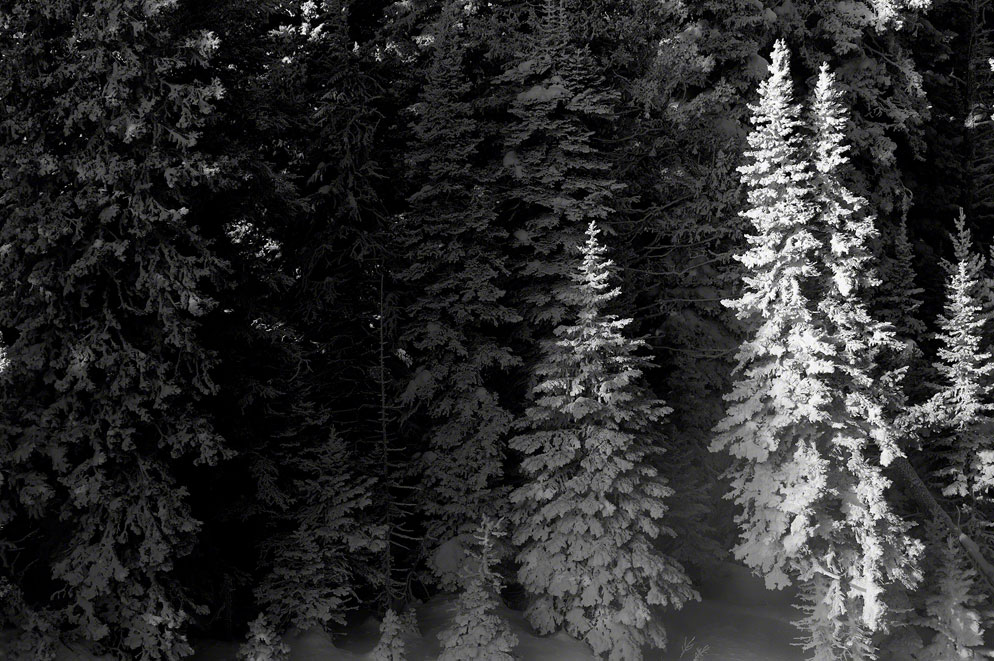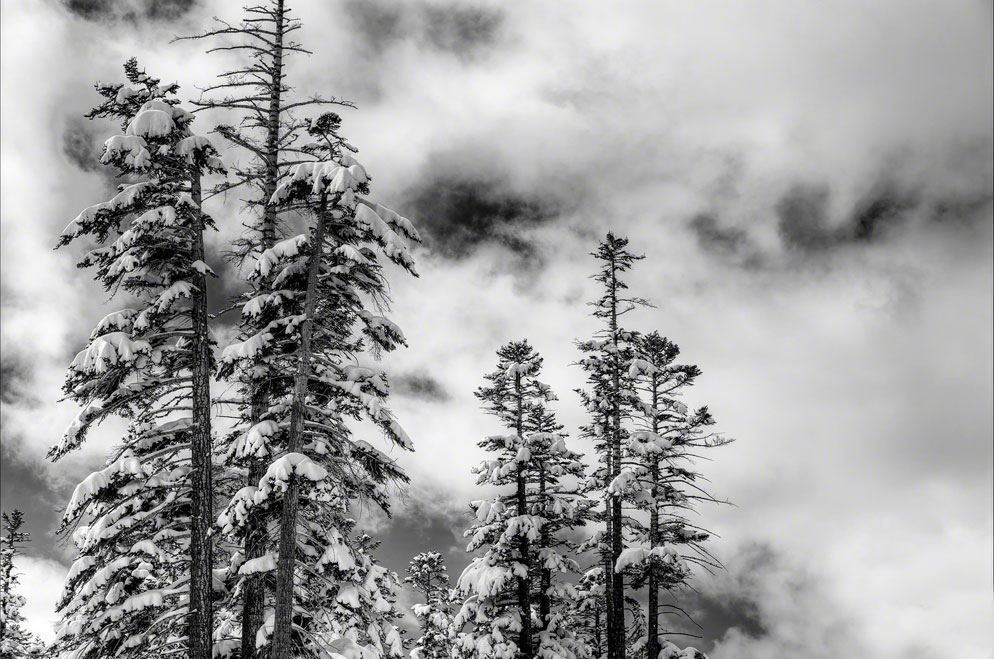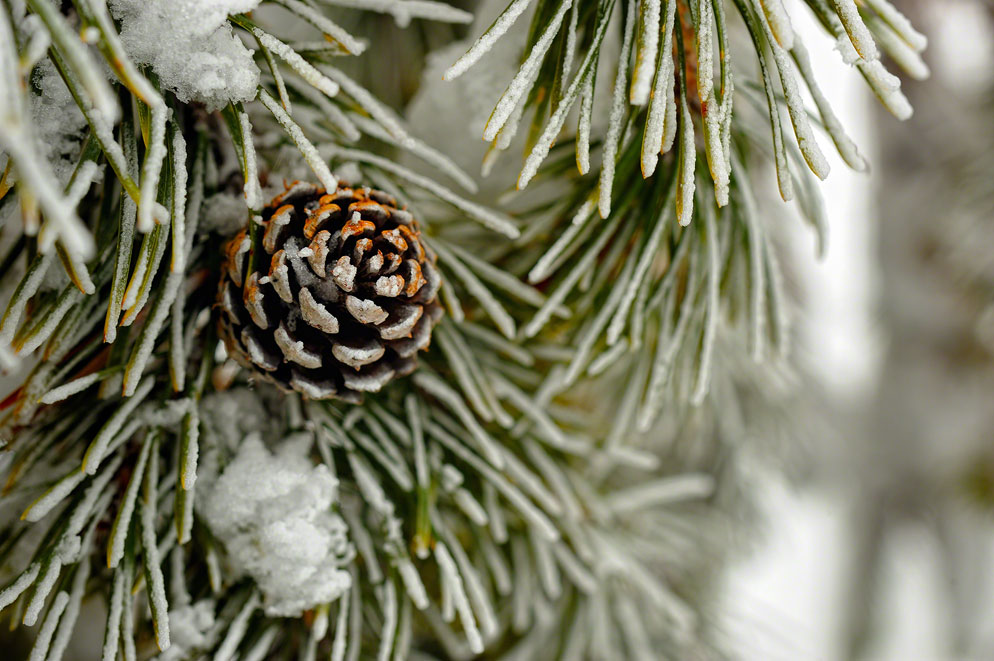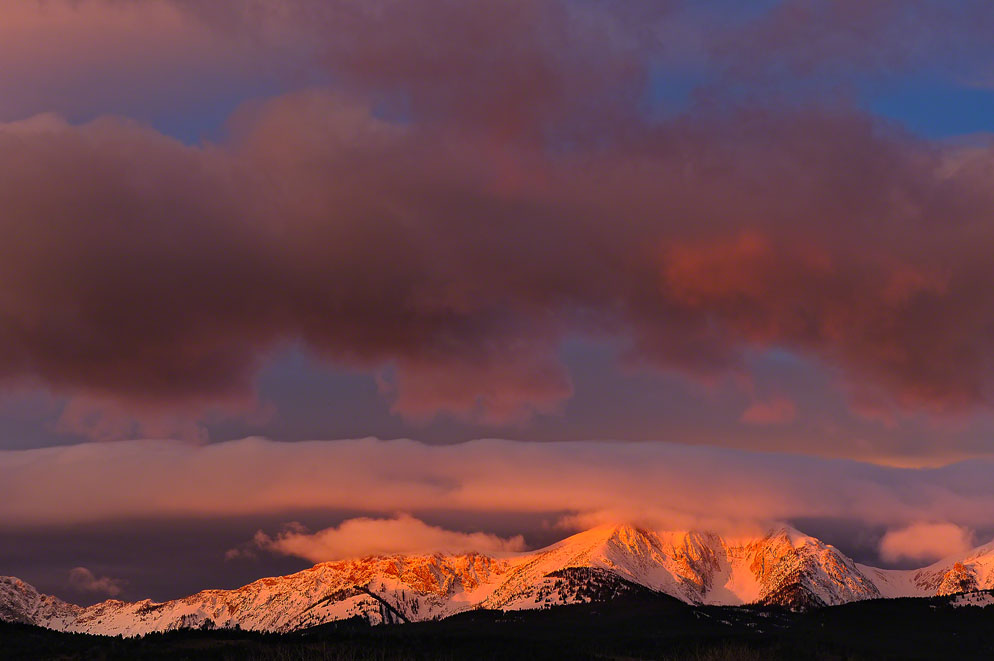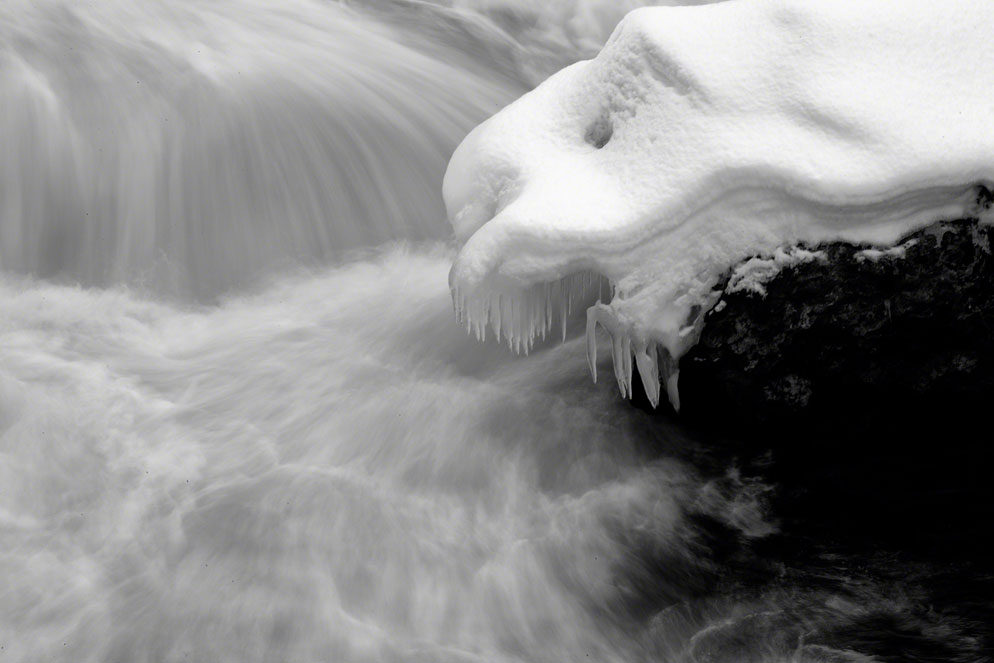Moose Peterson: How to Photograph Winter Landscapes
When Moose Peterson starts talking about photographing winter landscapes, you tend to pay attention. In fact, if you're like us, you take notes. As a renowned nature and wildlife photographer, Moose brings experience and expertise to the subject. He also brings an appreciation of the beauty of the winter world and a realization of its challenges.
Because we were taking notes, we can share his tips with you.
White Out
What was once the bane of winter photos is now past tense. You guessed it: blue or gray snow. Here's what used to happen: the camera's meter would read the vast white world as a vast overexposure, and to compensate the camera's autoexposure system would set faster shutter speeds or smaller apertures; either would effectively cut down the amount of light reaching the film or the sensor. Simply, the meter didn't know that all that white was what you really wanted. Moose remembers those days, and how he'd use +1/3 or +2/3 or more exposure compensation to let in more light and bring white back to white.
These days it's pretty much a non-issue. "With any Nikon D-SLR, I go with Matrix metering and aperture-priority exposure and that's it," Moose says. "I don't dial in any exposure compensation." And if some of the snow gets blown out—that is, overexposed—it's no problem. "White snow doesn't need to have a whole lot of detail for your mind to know its snow. In the majority of photos you'll take, you don't need to see the individual crystals of the snow."
In addition, it's also likely that the shadow areas of the scene will be filled in by all the light bouncing off the snow. "You won't have a lot of shadow area to deal with," Moose says, "and neither will your meter. The exposure range is mostly in the highlight area."
Things might be different when the sun's not out. "On an overcast or cloudy day, you might get a blue cast to the snow. I don't mind that so much at all—it helps suggest just how cold the scene is. What's the color of cold, after all? Blue."
But if you want the snow to whiten up, an exposure compensation of +1/3 or +2/3 should do the trick. Take a photo, check the LCD, adjust as needed.
Also, keep in mind that when you're shooting in snow, chances are you're not just photographing the snow. There's a person, a tree, an animal, a house...maybe a snowman. "And, once again, the snow in the scene acts like a giant fill card and bounces light around," Moose says, "and bounced light will be softer and more flattering for your picture."
Snow is not the only thing that can reflect light. Take a look at the first photo, taken at sunrise in Nevada City, Montana. "The barn is all lit up because the morning light is actually hitting another barn and bouncing off the warm colors of that building, which is acting like a giant gold reflector. Of course, I framed the scene so that big gold reflector of a barn is out of the picture. What you see is the result of the bounced light."
Contrast
The winter landscape doesn't have to be all white to tell its seasonal story. For example, check out the sixth photo, taken on the Madison River in Yellowstone National Park. "What are you doing in a photograph?" Moose asks, and then he answers: "You're telling a story. Well, in the Madison River photo I put the autofocus sensor on the trees in the sun, which insured that they'd be sharp, of course, but which also biased the exposure toward the sun, so the shadows on the left went to black. I framed the shot for that effect, for that contrast. The story I'm telling is that there's a transition taking place: spring is coming."
Color
Winter will almost always provide its share of color—you just have to seek it out. Sometimes chasing the light will do the trick. The Nevada City barn, for example, showed its true colors because Moose was on the scene in the early hours of the morning. (And when you catch the light, check its direction. "Look for sidelighting," Moose says. "It'll give you more definition in your subject because the shadows are revealing texture and detail.")
Then there's the subtle color on the pinecone in the eighth photo. Moose made the image in the Norris Basin region of Yellowstone. "The photo shows the way the scene looked to my eye, but not necessarily to the camera. It was an overcast day, so I set the camera's color control to vivid and changed the auto white balance to the A3 setting to warm up the picture." (The camera's warming range runs from A1 to A6; there's also a cooling range, from B1 to B6. As you might expect, the A range adds an amber tone to the image; the B range, a blue tone.)
"What you're doing is fine tuning the photo," Moose says. "In effect, you're warming up or cooling down the winter landscape." How much fine tuning will suit the scene you're shooting? That's up to your taste and judgment; take a picture at any setting and check the results.
Moose also remind us that the colder the air, the better the color. "Cold air is clearer," he says, "and there are often ice crystals in the air that cause light to diffract; you get really brilliant, pretty-picture colors. So you want to be photographing at sunrise and sunset—the coldest parts of the day."
Moose calls the tenth photo, taken in the Bridger Mountains of Montana, "one of the top five sunrises of my life." To get it, he had to be there at 4:45 in the morning—in the dark, in the cold and in the storm. "Some of the best photo opportunities happen when winter storms begin and end," he explains. "That's when the drama comes—when the light is trying to burst through. I took this photo as the storm was clearing out." So check weather reports or the weather app on your smart phone.
Comfort Zone
"Snow photography is only fun if you're comfortable," Moose says. "The right boots are essential. Look for high-tech snow boots that are rated to keep you warm down to zero. Next, gloves and hat. I'm a glove fanatic, I admit it. I never go to an outdoor shop without looking at the gloves. For basic snow shooting, when you'll be out for fun for a couple of hours, I recommend gloves that are made for cross-country skiing; they're ideal—very flexible, with good insulation. For hardcore, out-all-day shooting, my choice is ice climbing gloves. They have extra insulation on the top of the glove that keeps your hands warm. Hats? A personal thing—you'll know what works best for you.
"The rest is common sense: layered, trap-the-air-to-your-body clothing."
Gear Protection
"It's not like the old days when you had to weatherproof your gear," Moose says. "I've taken all the Nikon digital cameras, from COOLPIX to D3X, out in minus 20-degree weather and never had a problem.
"What you should think about, though, is taking your gear from a warm place—a building or a car—out into the cold. Don't breathe on any glass; if you avoid moisture in the beginning, you won't have moisture problems.
"My gear is in the camera bag when I'm not shooting. When I come back at night to my home or to a hotel, the gear's going to be cold, and if I just take it out of the bag I'll get the condensation cycle started, which is exactly what I don't want. So I take the camera gear out, put it on the counter or the bed, pop out the memory cards from the cameras and put a clean white towel over everything and let it all sit there until it comes to room temperature. All the condensation forms on the towel and is absorbed. You don't have to do this in a hurry, there's no rush—but do it. When it's all at room temperature, stow it back in the bag and you're ready for the next day or the next time.
"And if I'm in and out of a vehicle all day when I'm working, I keep a white towel on the gear when it's out of the bag."
Walk Right In (Not!)
"Think of where you're walking," Moose says, "and when you're walking there. You don't want to walk through a scene looking for subjects or vantage points and then realize that the nice virgin field of snow is now covered with your footprints. Think ahead."
Any Way the Wind Blows
In the fourth photo, which was taken near the Firehole River in Yellowstone, what you're seeing is the steam rising from the river blowing through the air. "I always look for places where the wind is blowing. When there's steam or snow or ice crystals in the air, the picture tells the viewer, 'It's cold!' Again, what's the story? What's the message?"
In a word: winter. And though Moose goes to some exotic places—and even conducts a winter workshop in Yellowstone—he also tells winter's story from close-to-home locations. He took the seventh photo practically from his backyard and the second and third images about a block away.
So if you're lucky enough to live in a place where snow visits you, or if you're going to be a visitor to a snowy region of the country, keep your camera close at hand.

